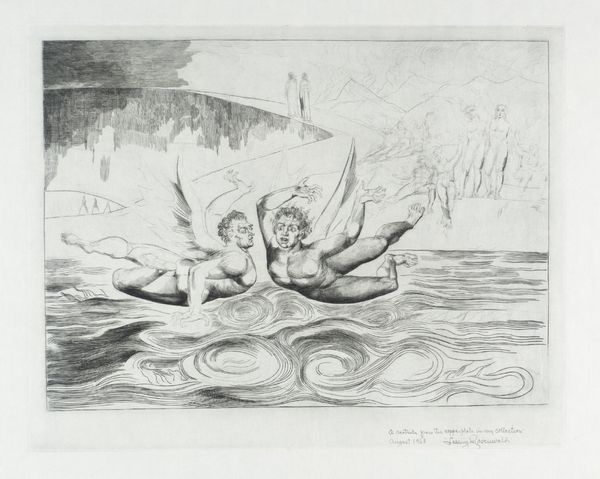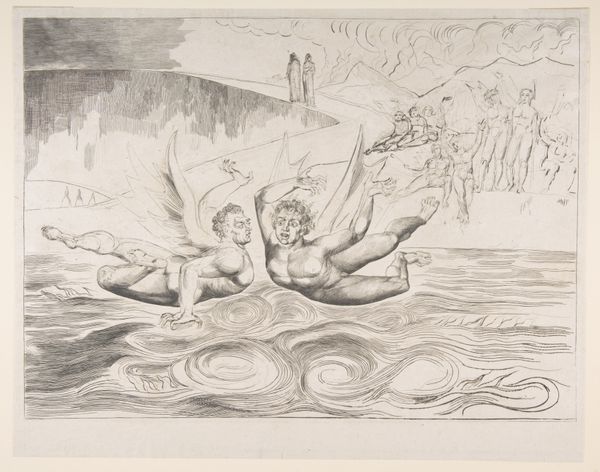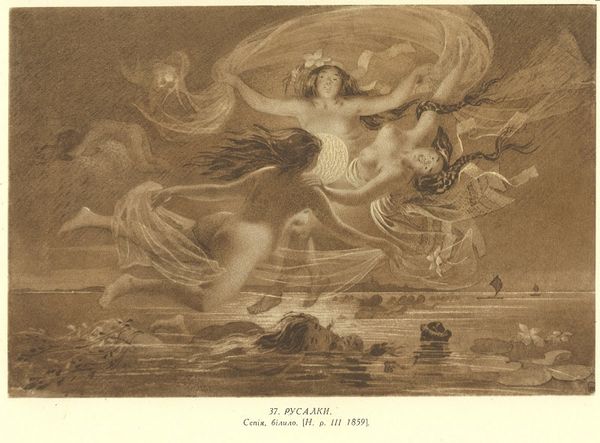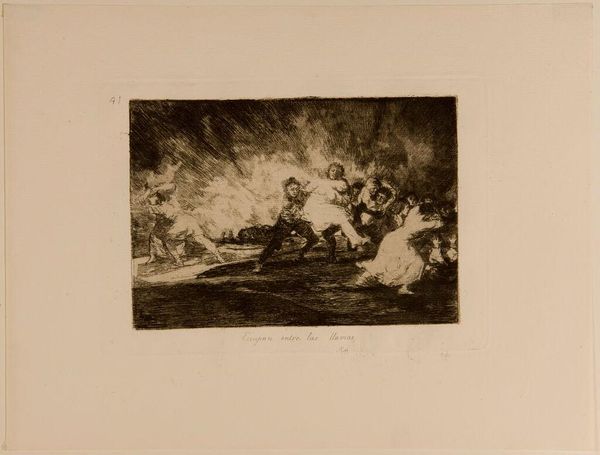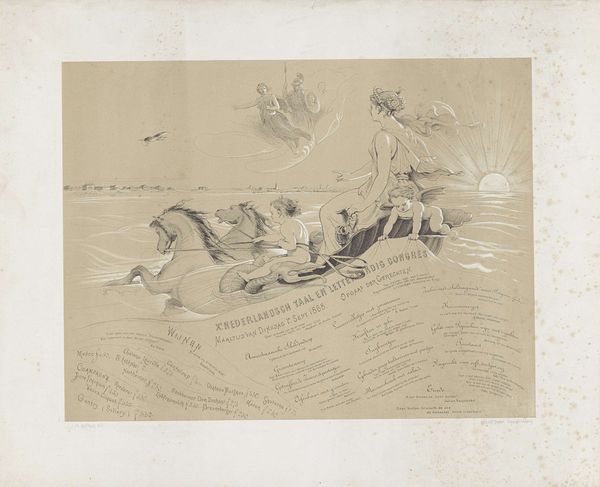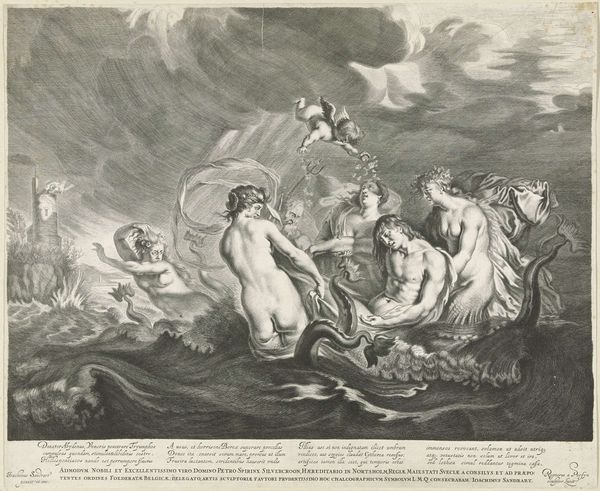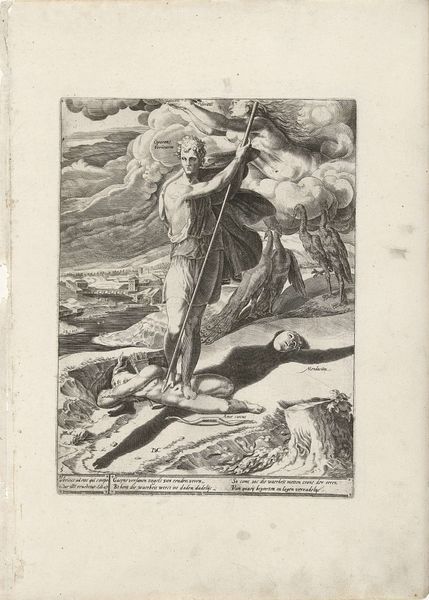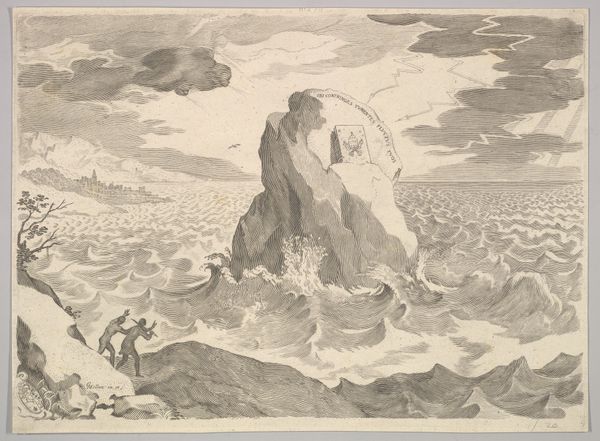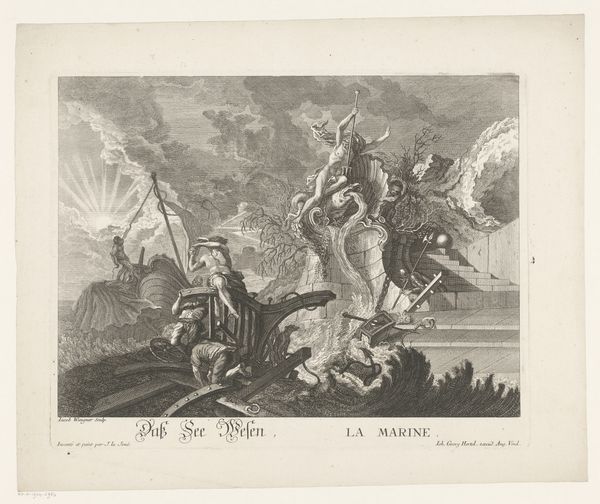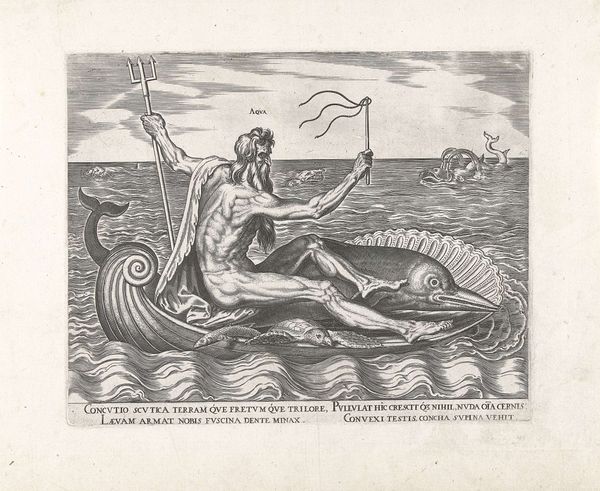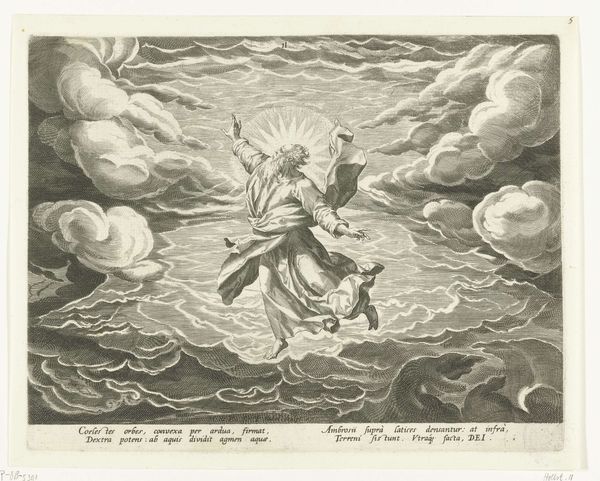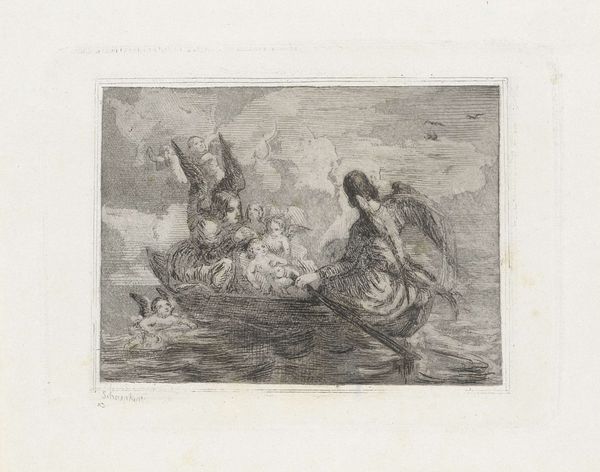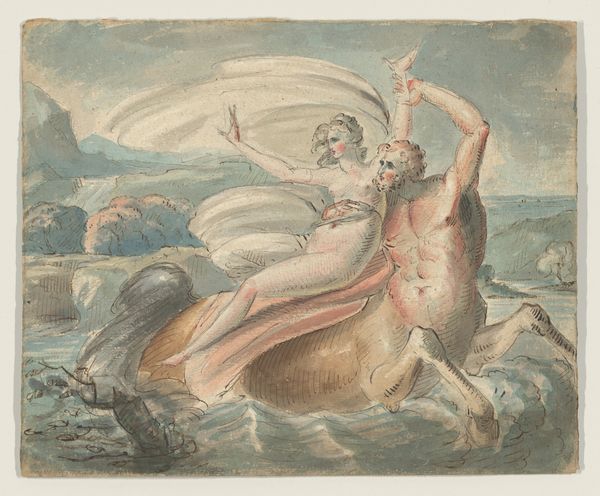
The Circle of the Corrupt Officials; the Devils Mauling Each Other. Inferno, canto XXII. c. 1827 - 1892
0:00
0:00
Dimensions: 240 × 330 mm (image); 78 × 354 mm (plate); 392 × 537 mm (sheet)
Copyright: Public Domain
Curator: William Blake’s drawing, made with ink and watercolor around 1827 and 1892, titled "The Circle of the Corrupt Officials; the Devils Mauling Each Other. Inferno, canto XXII,” vividly captures a scene from Dante's Inferno. What strikes you most about its initial impact? Editor: Immediately, it’s the tension. The way the figures contort, the swirling water… everything feels unbalanced, caught mid-motion. There is an almost frantic energy rendered in rather delicate watercolors, isn't there? Curator: Indeed. The dynamism relies heavily on Blake's characteristic linearity, but it's intriguing how those lines intersect and diverge, almost fighting with the constraints of the picture plane. The overall composition feels deliberately compressed. Note also Blake’s color palette—dominated by grey washes and highlights of yellows—emphasizes this visual turmoil. Editor: Those swirling waters certainly dominate the lower half of the picture; they’re like grasping hands pulling at the figures. Water has ancient associations with purification, but here, it is chaotic and threatening. Also, consider the winged figures – their wings almost seem to drag in the water. In art historical terms, traditionally wings often signified elevation. But they fail to do that here and look more like obstacles. What do they symbolize in this specific visual and narrative context? Curator: Precisely. Blake has subtly undermined traditional angelic symbolism to suggest that the fallen angels are tethered to the material world of sin. Furthermore, the placement of figures closer to the top horizon is an extremely unusual feature, as it destabilizes our reading. But what I am mostly interested in, is how our eye gets guided in circles here due to Blake’s peculiar technique of using swirling waters, gestures, and human groupings. Editor: Perhaps these details point towards a broader commentary about societal corruption—those in power betraying their sacred duties. One can’t ignore the clear art-historical parallel between the figures here and many works depicting, say, the Fall of Icarus. It feels both Biblical and pagan. Curator: Intriguing parallels. In any case, examining the use of color, line, and composition allows us to witness the full emotional weight of the piece. It is a complete system, carefully calculated and extremely consistent. Editor: Absolutely. Decoding those symbols deepens our understanding of its lasting resonance.
Comments
No comments
Be the first to comment and join the conversation on the ultimate creative platform.
